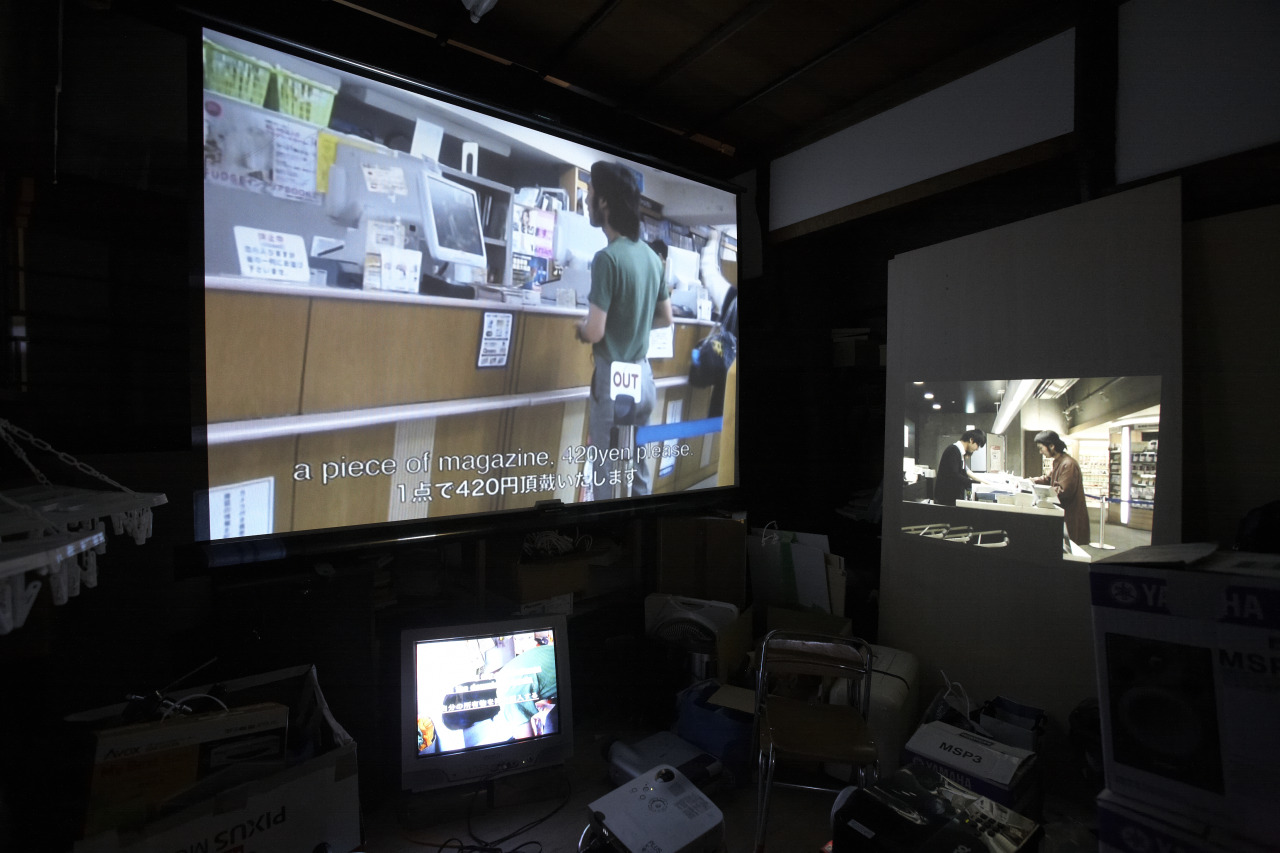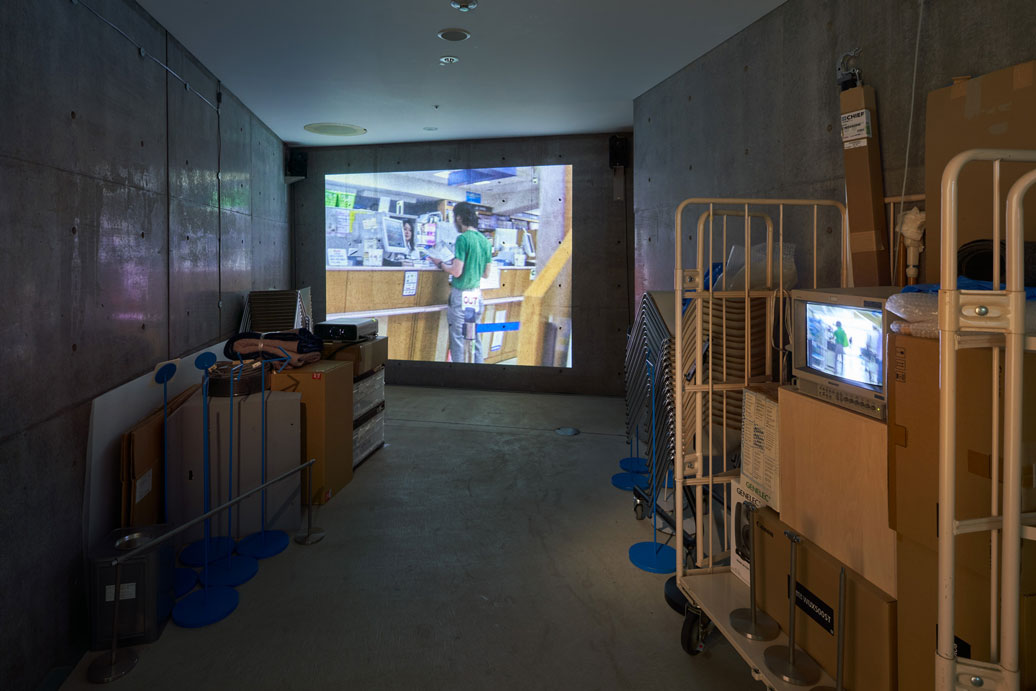Purchasing My Own Belongings Again in the Downtown, 2011

プロダクションスティル、2011
撮影:中堀徹
Production still, 2011
Photo by Tetsu Nakahori

「Ryugu is Over」、竜宮美術旅館、横浜、2012での展示風景
撮影:Yasuyuki Kasagi
Installation view “Ryugu is Over” at Ryugu Bijutsu Ryokan, Yokohama、2012
Photo by Yasuyuki Kasagi

「ルール?展」、21_21 DESIGN SIGHT、東京、2021での展示風景
撮影:吉村昌也
Installation view "Rules?", 21_21 DESIGN SIGHT Exhibition, Tokyo, 2021
Photo: Masaya Yoshimura
自分の所有物を街で購入する
2011, 3チャンネルのビデオ(7分06秒, 9分34秒, 6分06秒)
1950年代アメリカで、資本主義経済の発展とともにセルフサービスという合理的な販売手法が導入されたと言われる。以前は、店員が支配的に商品を管理していたものが、顧客が自由に商品を手にし吟味するようになり購買意欲をよりそそるのと同時に、店側にとっては商品を盗まれるリスクも抱えることになった。それまではレジを通して物と代金を交換すればよかったものが、大量の品々がレジに持ち込まれるようになってからは、その商品がどこからやってきたのかを問わず清算することになっている、つまり店員にとってはたとえ店外から持ち込まれた商品であろうとも、自店の商品にしか見えないのである。このプロジェクトでは、駅のキオスクや書店などで商品として一度購入した週刊誌や果物をそのまま携えて、同じ個体を別の店で購入してみようと試みる。私達が消費と所有を繰り返す日々をするりと抜け出し、その関係の違和感を用いて社会構造に介入する。無限にループするような感覚を覚えるのと同時にこれが私達の現実なのだということを感覚的に認識すること。一体、私達は何を消費し、一体何を手に入れているのだろうか。
Purchasing My Own Belongings Again in the Downtown
2011, 3-channel video installation (7'06 min, 9'34 min, 6'06 min)
In 1950s America, it is said that a rational sales method called self-service was introduced along with the development of the capitalist economy. Before, the store clerk dominantly managed all of the products, but with this system the customers were able to pick up the products freely and examine them by themselves, making them more willing to purchase, while at the same time the stores also held the risk of getting products stolen. Until then, it was a simple exchange at the cash register of money and products, but after it has changed to having loads of items being brought to the cash register, everything is supposed to be charged regardless of where the product came from. In other words, even if they were brought from outside, for the clerk they only look as though they are products from their own store. In this project, Niwa attempts to purchase the exact same magazine or fruit, products already bought from a train station kiosk or bookstore, at another store. Here, the artist pursues to escape from the repeated everyday experience of consumption and possession and undertakes an intervention into our social structure through the discomfort that arises from that experience. It feels as though it is an endless loop and at the same time, makes us sensuously aware that this is our reality. What is it that we are consuming and what do we finally gain?